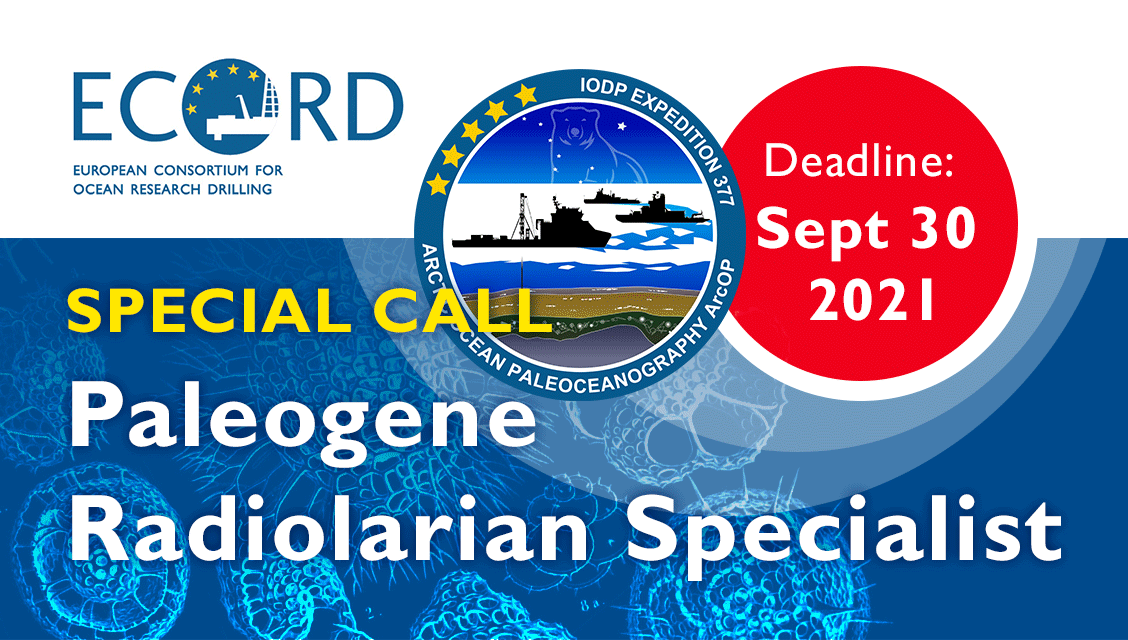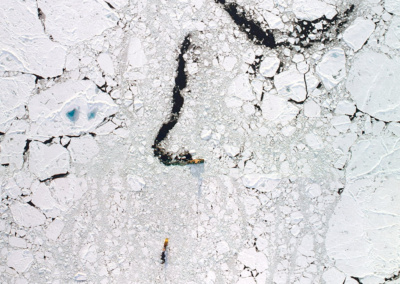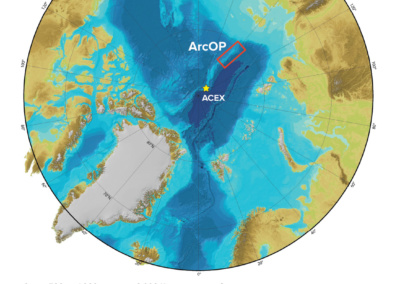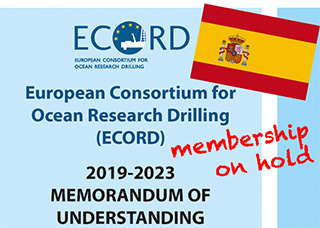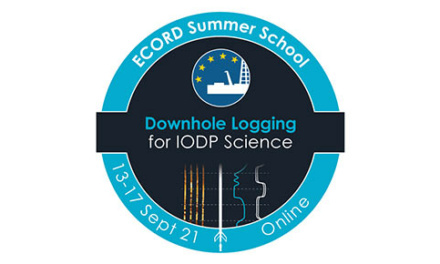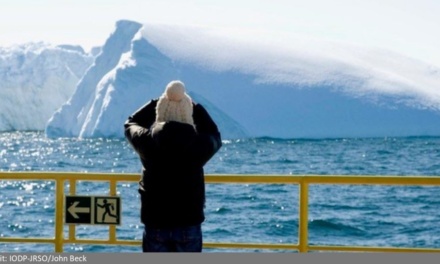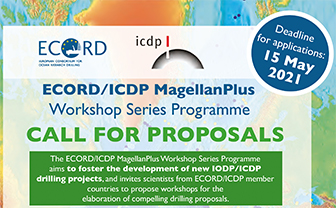CALL FOR APPLICATIONS
Paleogene Radiolarian Specialist
IODP Expedition 377: Arctic Ocean Paleoceanography (ArcOP)
An IODP Mission Specific Platform Expedition
organized by the
ECORD Science Operator (ESO) and the Swedish Polar Research Secretariat (SPRS)
(Aug–Sep 2022)
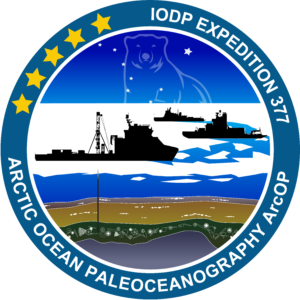
The deadline to apply is 30 September 2021
Applications are invited from scientists in ECORD member countries to join the Science Party for IODP Expedition 377: Arctic Ocean Paleoceanography (ArcOP). Any scientist from an IODP member country with expertise relevant to the objectives of the proposal may apply.
The proposal upon which this expedition is based was submitted as IODP Proposal #708 ‘Arctic Ocean Paleoceanography’. The full proposal and addendum describing the primary drill sites, as well as up-to-date expedition information, can be found on the Expedition 377 webpage http://www.ecord.org/expedition377/.
The Co-chief Scientists for this Expedition are Prof. Rüdiger Stein (MARUM – Center for Marine Environmental Sciences, University of Bremen, and Alfred Wegener Institute Helmholtz Centre for Polar and Marine Research, Bremerhaven, Germany) and Prof. Kristen St. John (James Madison University, Harrisonburg, USA).
Background and Objectives
The overall goal of the drilling campaign is the recovery of a complete stratigraphic sedimentary record on the southern Lomonosov Ridge to meet the highest priority paleoceanographic objective: the continuous long-term Cenozoic climate history of the central Arctic Ocean. Furthermore, sedimentation rates two to four times higher than those at the site of IODP Expedition 302: ACEX permit higher-resolution studies of Arctic climate change in the Pleistocene and Neogene. This goal can be achieved by careful site selection, appropriate drilling technology, and applying multi-proxy approaches to paleoceanographic, paleoclimatic, and age-model reconstructions
This sedimentary sequence from the central Arctic Ocean will be studied to answer the following key questions:
- Did the Arctic Ocean climate follow the global climate evolution during its course from early Cenozoic Greenhouse to late Cenozoic Icehouse conditions?
- Are the Early Eocene Climate Optimum and the Oligocene and Mid-Miocene warmings also reflected in Arctic Ocean records?
- Did extensive glaciations (e.g., the OI-1 and Mi-1 glaciations) develop synchronously in both the Northern and Southern Hemispheres?
- What is the sedimentary record of timing of repeated major (Plio-) Pleistocene Arctic glaciations as compared to that postulated from sediment echosounding and multi-channel seimic reflection profiling?
- What was the variability of sea-ice in terms of frequency, extent and magnitude?
- When and how did the change from a warm, fresh-water-influenced, biosilica-rich and poorly ventilated Eocene ocean to a cold, fossil-poor, and oxygenated Neogene ocean occur?
- How critical is the exchange of water masses between the Arctic Ocean and the Atlantic and Pacific for the long-term climate evolution as well as rapid climate change?
- What is the history of Siberian river discharge and how critical is it for sea-ice formation, water mass circulation and climate change?
- How did the Arctic Ocean evolve during the Pliocene warm period and subsequent cooling? How do the ACEX2 records correlate with the terrestrial record from the Siberian Lake El’gygytgyn?
- What is the cause of the major hiatus recovered in the ACEX record? Does this hiatus in fact exist?
Timing
The offshore phase of the expedition will last a maximum of 50 days in August and September 2022, with only a subset of the Science Party participating. Offshore activities will focus on core recovery, curation, sampling for ephemeral properties, biostratigraphy, physical properties,
preliminary lithostratigraphy (whole core observed at core ends and through plastic liners), and downhole logging. The cores will not be split at sea.
Subsequently, an Onshore Science Party (OSP) will be held at the MARUM – Center for Marine Environmental Sciences, University of Bremen, Germany, in either late 2022 or early 2023 (exact dates to be confirmed), where the cores will be split. The OSP will be a maximum of 4 weeks long, the exact length dependent on core recovery. All members of the Science Party must attend the Onshore Science Party. Please see https://www.ecord.org/expeditions/msp/ (and linked pages within) for an overview of Mission Specific Platforms in IODP.
Successful applicants will be invited either as an offshore-onshore participant, or as an onshore- only participant. Please note that there are no opportunities for offshore-only participation.
Expertise sought
We are looking for a Paleogene radiolarian specialist (all career stages encouraged) to take part in Expedition 377 for both the offshore phase and the Onshore Science Party (OSP).
Information webinar
To learn more about the scientific objectives of this expedition, life at sea, and how to apply to sail, please watch the recorded webinar for Expedition 377.
Possible Impacts of COVID-19
It may be tempting to think that COVID-19 might have receded enough by August 2022 for life to return to near-normal. However, ESO and SPRS are considering mitigation measures to ensure the expedition can continue in anything other than a complete global shutdown. These measures may include (and are not limited to) having a quarantine period before joining the vessel, regular testing, having up-to-date vaccinations against new COVID variants, back-up staff, alternative embarkation location(s), and of course a robust plan for managing an infection while at sea. Science Party applicants should be aware of the potential for such measures or similar, should be prepared for flexible arrangements and, if quarantine periods are used, an expedition commitment longer than the offshore phase and/or Onshore Science Party.
The Application Process
The Application Process is open to scientists in all ECORD member countries. Please download the Apply to Sail general application forms from the ESSAC webpage:
Please, fill out all applicable fields and send it to the ESSAC office by email (essac@plymouth.ac.uk) with the following additional documents by the deadline of 30 September 2021:
- A letter of interest outlining your specific expertise, previous involvement in DSDP/ ODP/ IODP expeditions, research interests, primary research goals of your proposed participation.
- CV and publication list.
- Early career researchers must additionally provide a letter of support from their host institution, including information on post-cruise science support.
All applications should state how you intend to achieve your proposed scientific objectives, with information on the funding scheme and support from your institution or national funding agencies. More information can be found under: http://www.ecord.org/expeditions/apply-to-sail/
In addition to the ESSAC application, all applicants must inform their national office or national delegate and send them a copy of their application documents. The national offices or national delegates can also provide information regarding travel support, post-cruise funding opportunities, etc.
See http://www.ecord.org/about-ecord/about-us/ for a list of the national contact persons.
For further information or questions, please contact the ESSAC Office:
ECORD Science Support & Advisory Committee
Antony Morris (ESSAC Chair)
Hanno Kinkel (ESSAC Science Coordinator)
School of Geography, Earth and Environmental Sciences, Plymouth University, UK Drake Circus, Plymouth PL4 8AA, UK
e-mail: essac@plymouth.ac.uk
website: www.ecord.org
https://www.ecord.org/arcop-a-novel-scientific-ocean-drilling-expedition-to-be-conducted-in-2022/
ECORD Science Support & Advisory Committee
Antony Morris (ESSAC Chair)
Hanno Kinkel (ESSAC Science Coordinator)
e-mail: essac@plymouth.ac.uk

